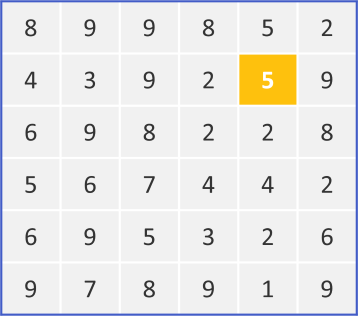Issue #381: The Media and Our Food
Good morning. It’s Friday, August 30th. Max’s little guy turns 5 today!
In today’s email:
Focus: The Media & Food
Inspire: Signs of Happiness
In the News: Combating Alzheimer’s
Brain Games: Kyudoku
Stat of the Day
According to the Surgeon General, the percentage of parents who say most days their stress is completely overwhelming (see full article HERE).
Pictures of cheese puffs, blue (!?!?) pretzels and what looks like fruity pebbles - with the title to suggest this stuff isn’t bad for us.
It’s since been renamed “Why One Dietitian is Speaking Up for ‘Ultra-Processed’ Foods.”
But it’s still one of the top promoted pieces of content and, quite frankly, is one of the most nonsensical articles I’ve read.
A dietitian was upset with us demonizing these “bad” foods that so many people rely on because of access and cost - it’s true this is the crap they sell at low prices.
So she did her own experiment of living on 80% processed food. And guess what…she felt great! More energy, less anxiety - no more need for coffee.
She continues that recommendations to avoid ultra-processed foods confuse people and make them feel bad - with “questionable” upside to their health.
Ok - let’s dig into the 3 problems with this article:
The article compares a meta-analysis of 45 studies with over 10M people from 2009-2023 linking ultra-processed foods to everything from depression and diabetes to cancer, cardiovascular disease, and cognitive impairment to how 1 dietician felt after eating processed food for a few weeks.
It cites a study where a hypothetical diet of processed food scored an 86 out of 100 on adherence to federal dietary guidelines.
It makes it seem like since “ultra-processed foods” is such a big category we should just throw up our hands - saying that gummy bears and canned kidney beans are both processed so basically the same thing.
First off - not sure if I have to say this or not, but one person’s (probably biased) experience isn’t quite the same as 45 rigorous research studies.
Second - this doesn’t tell us anything about nutrition, just the federal guidelines. Remember the pyramid when we were supposed to eat 6-11 servings of bread a day??
Third - people are smart enough to know that beans in a can - though still processed - are slightly different from gummy bears.
This is all an effort to continue to confuse us about nutrition - and food companies pushing back on new guidelines that are being proposed to actually help us be healthier.
Maybe - instead of defending this junk food - we should be talking about the incentives for the entire food sector from the seeds to the crops to the boxes on the shelf for what’s cheap and what’s expensive at the grocery store.
I don’t know, maybe focus on making the healthy food affordable for everyone!
Bottom line - don’t let this nonsense confuse you.
Eat as much real food as possible (doesn’t come with a label)
Avoid added sugar, chemicals, and artificial colors as much as possible
Very few of us will eat the perfect diet - but I trust we know not to eat too many Twinkies, no matter what the media says.
Thrive25 Partner Spotlight
Caraway believes non-toxic cooking surfaces and thoughtful design lead to cleaner cooking.
Max and I both have the cookware set - it’s hard to imagine cooking without them now. And Max has been through so many pots and pans - stainless steel, non-stick, you name it - they’ve had it, but he finally found a brand that lives up to their promise.
Caraway Core Value #1: Kitchenware Without the Chemicals - no matter the material, Caraway provides you with the cleanest & most sustainable kitchen essentials.
Inspire
Signs of Happiness
Since 2019, Gary King has posted 602 “happiness” signs around St. Petersburg, FL.
He started the experiment after losing his son to suicide.
Said King, “I was put in a position where I wanted to change my own life and changing other people’s lives by putting up these happiness signs.”
Why all the signs?
Gary uses the same science that goes into brand advertising.
Back in 1956, Harvard psychologist George Miller introduced the “rule of 7” - that humans can only effectively process seven pieces of info at a time (plus or minus 2).
The two things brands took from this research:
Make the message short or bite-sized (easier to remember) - hence a clear brand
Get in front of people as often as possible so it sticks
The other concept that came about 10-15 years ago was “ambient advertising” - seeing something that refers to the brand that’s out of the ordinary or unexpected.
So instead of a big billboard - you see something like this:
These campaigns don’t typically scale - the happiness project does though.
It’s so simple - one word, all over, in places you wouldn’t expect.
Seems like a better thing to see every day than the Golden Arches.
“We are here to live a great life. You have control of what goes on in here (your heart) - not what goes on out there.”
H&L in the News
Reversing Brain Aging: Scientists have found a way to restore the brain’s waste disposal system, offering a potential new treatment for Alzheimer’s and Parkinson’s. This breakthrough could help combat aging and improve brain health. (Source)
The Magic of Home Cooking: Why home-cooked meals outshine restaurants: it's more than the food - it's about connection, culture, and personal touch. (The Atlantic)
Heroic Histones: These proteins do more than spool DNA - they play crucial roles in cellular metabolism, helping manage biochemical processes essential for life. (Knowable)
Brain Games
Kyudoku
We’re stepping it up with the difficulty today - this is one notch below the most difficult level. Kyodoku is a 6x6 grid where you need to use logic to find nine unique numbers (1 to 9) so that each row and column has a sum of 9 or less. The 5 highlighted in yellow is given.
Here’s a little help to get started. Because we know 5 is given, we can’t use 5 again (gray boxes) and we can also eliminate any numbers that would make the sum of the row or column with the given 1 more than 9 (blue boxes). Again, this is a little tougher - good luck!
Credit: Brainzilla
**For answer, scroll to the bottom of the post
Product Recs
☕ Bulletproof - fuel your journey to a better you with Bulletproof. Elevate your performance with science-backed, functional nutrition from a wide range of coffees, proteins and supplements. Click HERE to start your transformation
💊 Momentous - unlock your peak performance with Momentous supplements: scientifically proven, clinically backed, and patented formulas. Exclusive offer for Thrive25 subscribers: enjoy a 15% discount off the entire product portfolio. Use Code Thrive at checkout. Don't miss out on this opportunity to enhance your performance journey - shop now!
🍴 Primal Kitchen - Primal Kitchen redefines flavor with a healthy twist, offering an array of irresistible options. Enjoy a 10% discount off your entire order at Primal Kitchen. Don’t miss out - click HERE to claim your discount today!
Thanks for another great week!
Want to see what we’re up to? Sign up for early access to our platform
Check out the latest videos on our YouTube channel
Got feedback, recommendations or stories to share? Tell us what’s on your mind here
Want this direct to your inbox? Sign up here
** Brain Games Answer **
Here’s the answer. In this grid, 1 was pretty easy, since there’s only one. Small numbers don’t usually help, but this did - it eliminated two 9s. And if you look at the 2nd and 3rd columns, 7 and 9 are only included there, nowhere else. So you can eliminate any numbers > 2 in those columns (sum would be greater than 9). This helps solve 3. After a few more logical steps, you’ll also find the 1st and last columns can only have 6 or 8. That’s a pretty big help. Hope you were able to figure it out!
Why Thrive25
We’re 40-something dads that felt our bodies and minds start to slow down and we’re not ready for that. We found too much information on every subject. So we started Thrive25 to transform what we’ve learned into something useful for the rest of us to spend just 3-5 min a day to optimize our health & longevity.
This newsletter is for you and we truly value your feedback. Never hesitate to reach out to us at team@thrive25.com.
To health!
Sign up for free:
The information in this newsletter is for informational purposes only and may not be appropriate or applicable based on your individual circumstances. Thrive25, Inc. does not provide medical, professional, or licensed advice. Please connect with your healthcare professional for medical advice specific to your health needs.












